There are hundreds of edible plants in the Sonoran Desert and Native cultures have been harvesting them for food and medicinal purposes for centuries. In fact, cactus fruits, in general, are known for being high in vitamins A and C, while other parts of edible desert plants provide good sources of protein.
The best way to identify and experience edible desert plants is with a well-trained guide showing you the way (do not attempt to eat any desert plants unless you are 100% certain the plant is edible and that you are preparing it correctly). Most professional Jeep and Hummer tour guides are well-versed in desert botany and can show you exactly which plants are safe to eat. Here is a quick look at some of the most recognizable edible plants in Arizona.
Prickly Pear
Opuntia Velutina
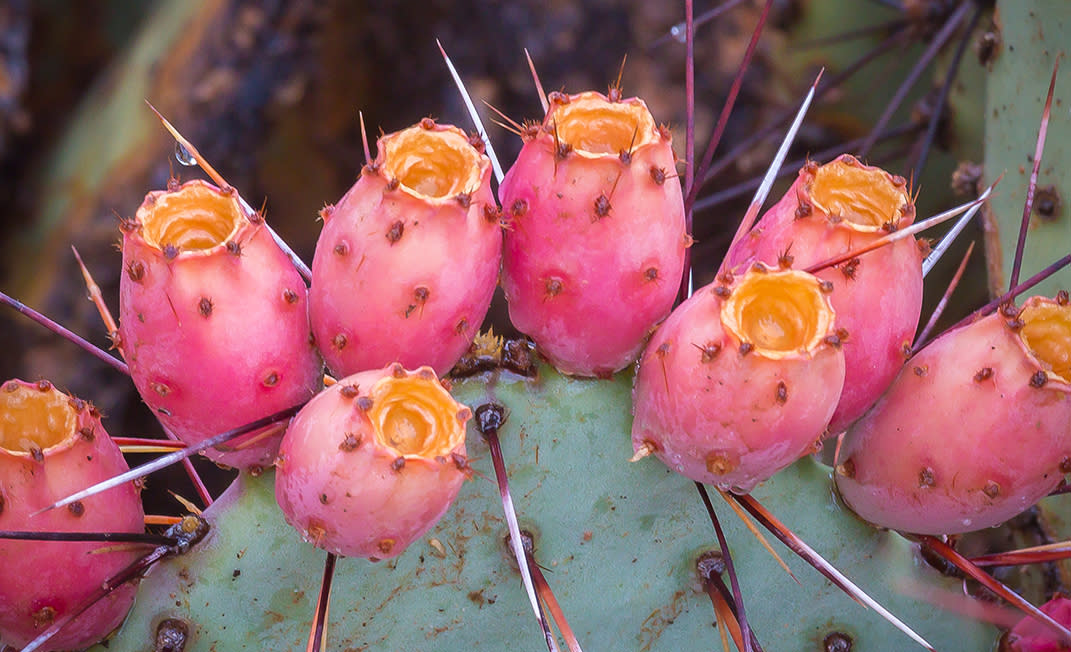
The prickly pear cactus has many edible parts. The plant’s pads, also known as nopales, can be boiled and served in a salad or eaten as a vegetable side dish. The red flesh of the prickly pear fruit is very sweet and can be eaten raw or cooked (do not eat the skin as it is filled with tiny thorns). Syrup made from prickly pear fruit is often used as a flavoring in candy, lemonade and margaritas.
Cholla
Cylindropuntia
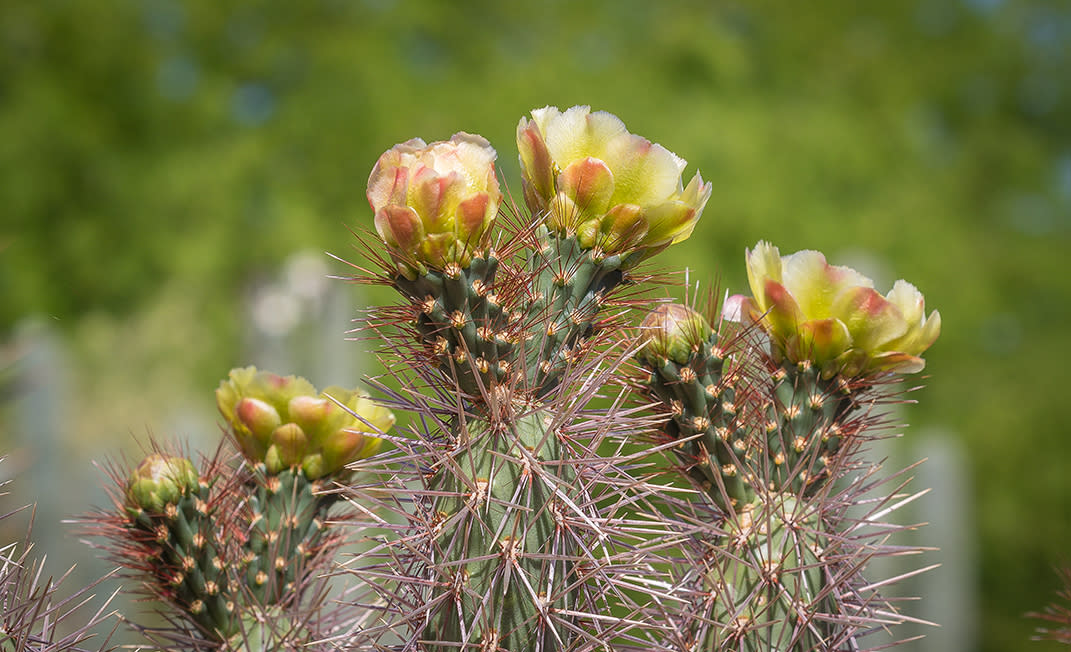
Like the prickly pear, most varieties of the cholla cactus have edible parts. The parts most commonly used for food are the immature flower buds, ripened fruit and young, non-woody joints. Both the fruit and joints are covered in thorns that need to be removed prior to eating (extreme care must be used when harvesting). The cactus fruit is sweet and mildly reminiscent of strawberries. The joints of the jumping cholla can be eaten raw in small quantities (less likely to cause GI upset when cooked) and taste a little like kiwi.
Saguaro
Carnegiea gigantea
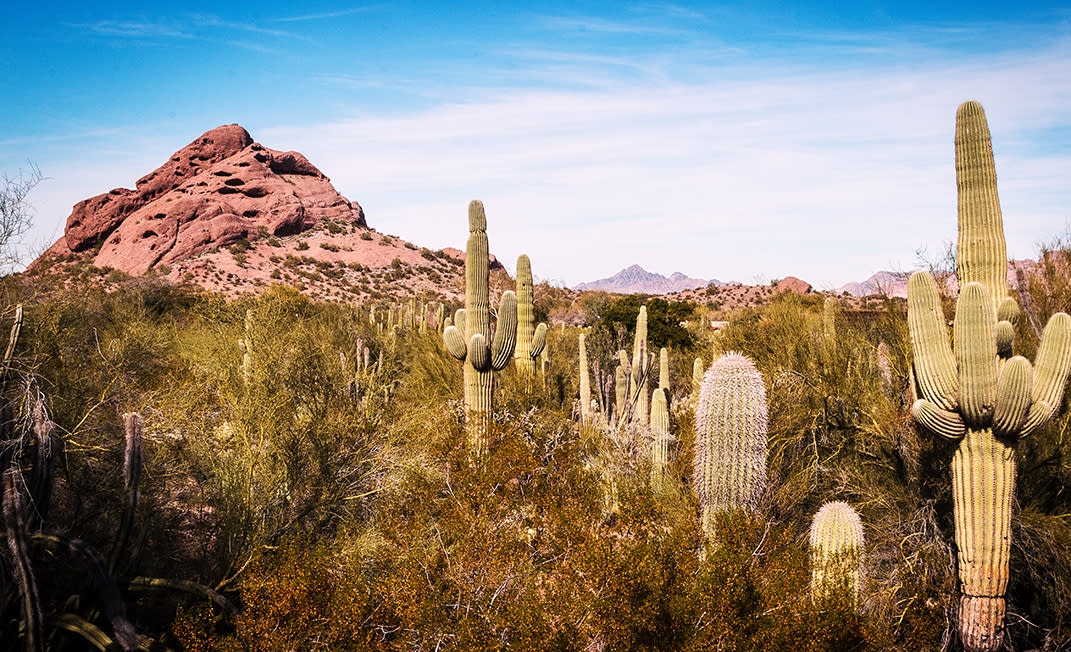
There is no mistaking the look of the Sonoran Desert’s signature saguaro cactus. Once a year, these tall cacti produce ruby-colored fruit which usually ripens by late June. The fruit is full of pulp and seeds and tastes faintly like strawberry. It can be eaten raw or made into jam, wine and syrup.
Barrel Cactus
Echinocactus grusonii
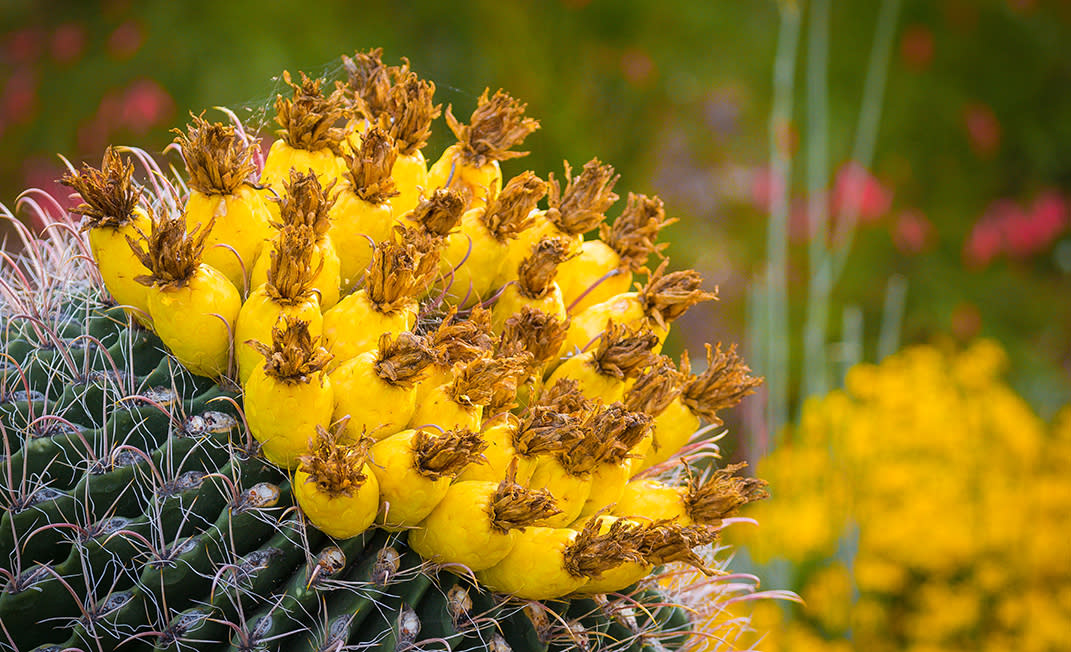
The fruit of the barrel cactus is ripe when it turns yellow. The mildly tart flesh of the fruit can be eaten raw or cooked, and the seeds, which are a good source of protein, can be ground into a meal. Contrary to popular belief, this round cactus is not a source of water. In fact, ingesting the flesh or juice of the actual cactus can cause severe GI symptoms and accelerate dehydration. Eat only the fruit of this desert cactus.
Hedgehog Cactus
Echinocereus
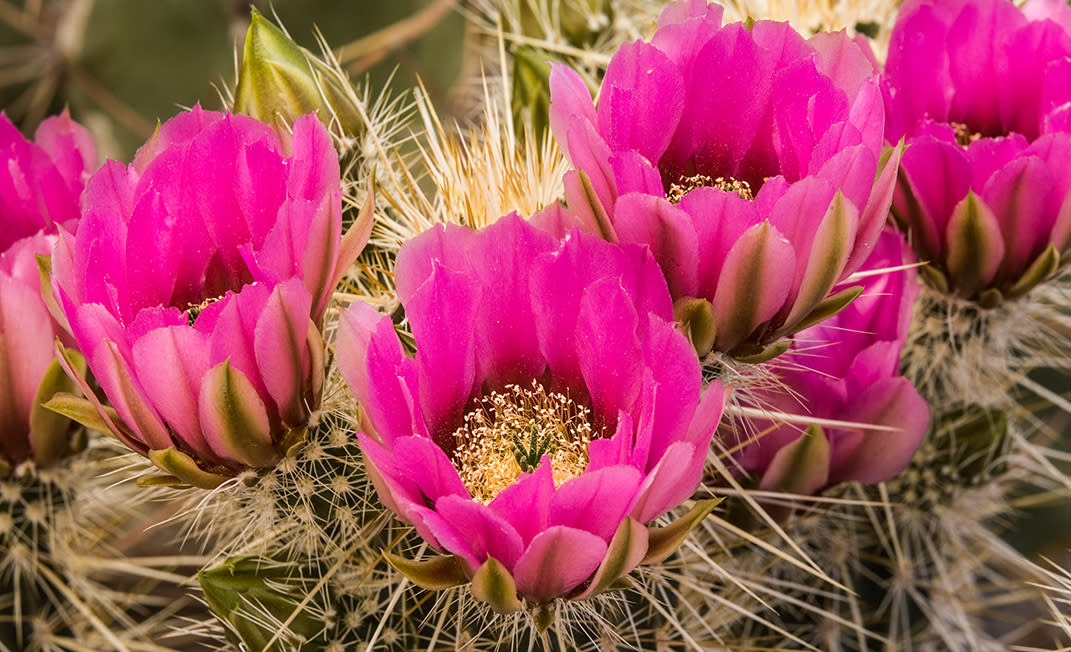
There are several species of hedgehog cactus, the fruit of some being sweeter than others. Simply slice the fruit in half and scoop out the pulp and seeds to enjoy raw.





